#historical fiction writeblr
Note
Hello! Feel free to answer this privately, but I was wondering if you have any advice or resources for researching history in the old west?
And, also do you have any advice on coming up with a good wild west/ western characters names?
Hey! I hope it's okay that I answer this publicly since it may help others. I could write an essay on this stuff but I'll try to keep it short and not overwhelming.
My advice can be applied to writing historical fiction in general:
Keep notes and more importantly keep track of where you learned things in case you ever need to go back.
Read widely and then narrow in. It's good to have a general sense of the era and different perspectives on historical events before zeroing in.
Books are great but don't feel restricted to them. There's many great online resources like academic journal articles, videos, archives, maps, etc. I've even reached out to museums lol.
Don't feel like you need to know everything before you start writing. You can always go back later on and make changes during the editing process.
Seek out resources on groups of people/perspectives that have been largely ignored in history class and by Hollywood. Your writing will be richer for it.
General Old West Resources
If there is a particular topic you are interested in, let me know and I'll see if I can find some specific resources.
Online
Legends of America
Wide-ranging overview across a variety of topics.
Arizona Ghostriders (Youtube)
400+ videos covering a wide range of Old West topics. Lots of great Myth Vs. Reality videos.
Writing Research - American Frontier (The Wild West) by ghostflowerdreams
Some of the links might be dead (try the waybackmachine if this happens), but as you can see there are many Old West resources online. :)
Books
Dodge City: Wyatt Earp, Bat Masterson, and the Wickedest Town in the American West by Tom Clavin
Ignore the title. It's more of a collection of interesting stories about people, places, and happenings in the Old West than an exhaustive history of Dodge, Earp, and Masterson. Highly enjoyable read.
National Geographic The Old West
Provides an overview of big events with wonderful pictures and illustrations. Warning: the text is dry as the desert itself.
The Writer’s Guide to Everyday Life in the Wild West (1840-1900) by Candy Moulton
What it says on the tin. This one is more if you want to get into details but I included it since it covers six decades.
The Gilded Age by Joel Shrock
Only read this if you're a nerd like me you want a bigger picture of the historical era that the "Wild West" falls into. Includes a list of prices for daily life items.
Academic books and textbooks are another good "general" resource but can be harder to find.
Naming Western Characters
Aside from using websites like Top Names of the 1880s and looking up Victorian baby names, I sometimes draw inspiration from lesser known historical figures and biblical names. I'm personally not a fan of cowboy/outlaw name generators but that's an option as well. For surnames, censuses are great since they are broken down by decade and region. Here's one for the 1860 in St. Louis Country.
I hope this helps a bit. Again, feel free to reach out if you need help finding more specific resources, (this goes for anyone reading this). Good luck writing your western! <3
#western#writeblr#historical nonfiction#historical fiction writeblr#old west#book rec#research#ask me
13 notes
·
View notes
Text
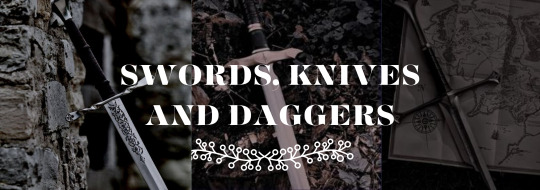
Writing Weapons (1): Swords
The Thrusting Sword
Type of fight scene: entertaining, duels, non-lethal fights, non-gory deaths, swashbuckling adventure
Mostly used in: Europe, including Renaissance and Regency periods
Typical User: silm, male or female, good aerobic fitness
Main action: thrust, pierce, stab
Main motion: horizontal with the tip forward
Shape: straight, often thin, may be lightweight
Typical Injury: seeping blood, blood stains spreading
Strategy: target gaps in the armous, pierce a vital organ
Disadvantage: cannot slice through bone or armour
Examples: foil, epee, rapier, gladius
The Cleaving Sword
Type of fight scene: gritty, brutal, battles, cutting through armour
Typical user: tall brawny male with broad shulders and bulging biceps
Mostly used in: Medieval Europe
Main action: cleave, hack, chop, cut, split
Main motion: downwards
Shape: broad, straight, heavy, solid, sometime huge, sometimes need to be held in both hands, both sides sharpened
Typical Injury: severed large limbs
Strategy: hack off a leg, them decapitate; or split the skull
Disadvantage: too big to carry concealed, too heavy to carry in daily lifem too slow to draw for spontaneous action
Examples: Medieval greatsword, Scottish claymore, machete, falchion
The Slashing Sword
Type of fight scene: gritty or entertaining, executions, cavalry charge, on board a ship
Mostly used in: Asia, Middle East
Typical user: male (female is plausible), any body shape, Arab, Asian, mounted warrior, cavalryman, sailor, pirate
Main action: slash, cut, slice
Main motion: fluid, continuous, curving, eg.figure-eight
Shape: curved, often slender, extremely sharp on the outer edge
Typical Injury: severed limbs, lots of spurting blood
Strategy: first disable opponent's sword hand (cut it off or slice into tendons inside the elbow)
Disadvantage: unable to cut thorugh hard objects (e.g. metal armor)
Examples: scimitar, sabre, saif, shamshir, cutlass, katana
Blunders to Avoid:
Weapons performing what they shouldn't be able to do (e.g. a foil slashing metal armour)
Protagonists fighting with weapons for which they don't have the strength or build to handle
The hero carrying a huge sword all the time as if it's a wallet
Drawing a big sword form a sheath on the back (a physical impossiblity, unless your hero is a giant...)
Generic sword which can slash, stab, cleave, slash, block, pierce, thrust, whirl through the air, cut a few limbs, etc...as if that's plausible
adapted from <Writer's Craft> by Rayne Hall
#writing#writers and poets#writers on tumblr#creative writing#let's write#poets and writers#creative writers#writeblr#resources for writers#helping writers#fantasy#sword#sword fighting#fight scene#historical fantasy#adventure fiction#description#writing practice#writing prompt#writing inspiration#writing ideas#on writing#writer#writerscommunity#writing advice#writing community#writer stuff#writers life#writers community#writers block
1K notes
·
View notes
Text
It wouldn’t be historically accurate for my story to include BIPOC!
This is an argument often made about European-style fantasy media like Game of Thrones, Lord of the Rings, and Disney’s Frozen. Audiences, often white, assume that due to the majority-white setting, adding any visible number of BIPOC to the story would be unrealistic.
What these critics fail to realize is that BIPOC do in fact live, and have lived, in these settings, and records of BIPOC presence in places assumed to be majority-white have been buried, written out, or not taught due to white supremacist and/or colonial bias in the field of history. There are historical European settings that were far more diverse than is often portrayed. Consider:
The Moorish Empire exerted an extensive influence over life and culture in Southern Europe from Spain from 711 to 1492
The Ottomans were heavily involved in European affairs up until the treaty of Karlowitz in 1699, but still considered a part of Europe even through the 19th century
The sheer size of the Roman Empire ensured the continued movement of people from various backgrounds within the Mediterranean well until the end of the Byzantine Empire.
“Historical accuracy” should not be used as an excuse for media to be exclusively white in its casting. While there are places which are or were predominantly white, there will always be factors like global trade and immigration that bring multiculturalism to their doors.
And even if the presence of a certain demographic is unrealistic for a certain setting? Consider that we’ve accepted far worse inaccuracies in historical fiction in the name of artistic license. Consider that our understanding of human history is, and will always be, incomplete.
Further Reading:
Historically Diverse London, “Historical Accuracy,” and Creator Accountability
Making a Black Pride and Prejudice Resonate
---
This Q&A is an excerpt from our General FAQ for Newcomers, which can be found in our new Masterpost of rules and FAQs. If you're new to Writing With Color and/or want more writing resources, check it out!
-Writing With Color
#writing with color#writeblr#representation#poc representation#history#historical fiction#historical accuracy#writing advice#writing tips#writers on tumblr#diverse books#diversity matters#faq
3K notes
·
View notes
Text
can’t currently afford the print copy of the fabulous @lackadaisycats work?
maybe your local library will buy it in the meantime! hand for scale.
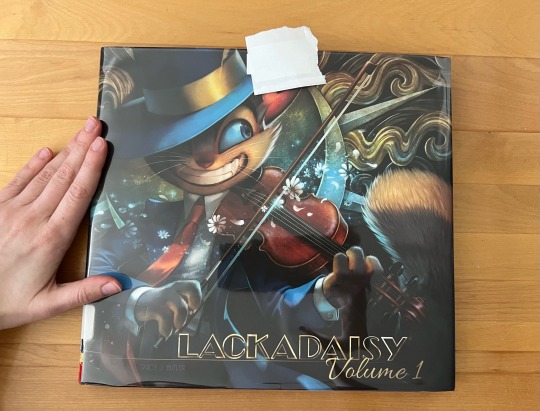
reading a hard copy of what I found years ago on the internet is cool in its own right, but the over 20 pages of bonus content are what’s really tempting.
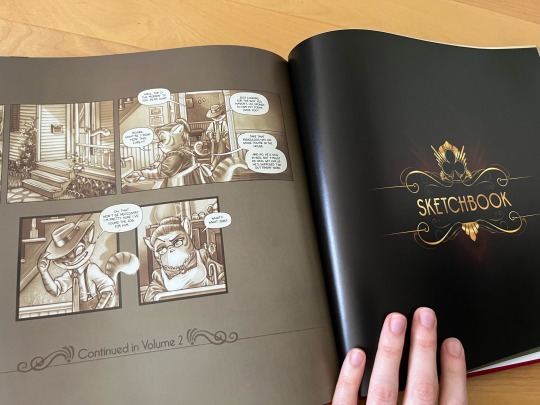
note about the back cover: this is what was facing out as I carried the book in my arm out of the library and into the streets. certainly didn’t make me look like a psycho I’m sure.

#cheers#lackadaisy#lackadaisy comic#lackadaisy cats#tracy j butler#iron circus comics#good art#good books#graphic novel#webcomic#public libraries#library books#library#books & libraries#support artists#1920s#historical fiction#anthromorphic#writeblr#artblr#booklr
912 notes
·
View notes
Text
Etiquette of the Edwardian Era and La Belle Époque: How to Dress
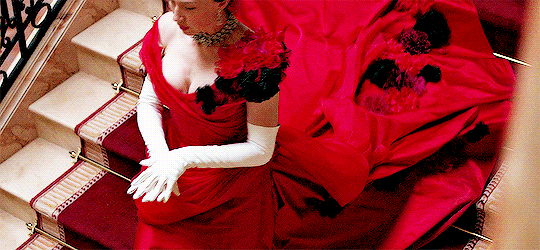
This is a new set of posts focusing on the period of time stretching from the late 19th century to the early 20th Century right up to the start of WWI.
I'll be going through different aspects of life. This series can be linked to my Great House series as well as my Season post and Debutant post.
Today will be focusing on the rules of clothes with this time period.
A Cut for Every Occasion
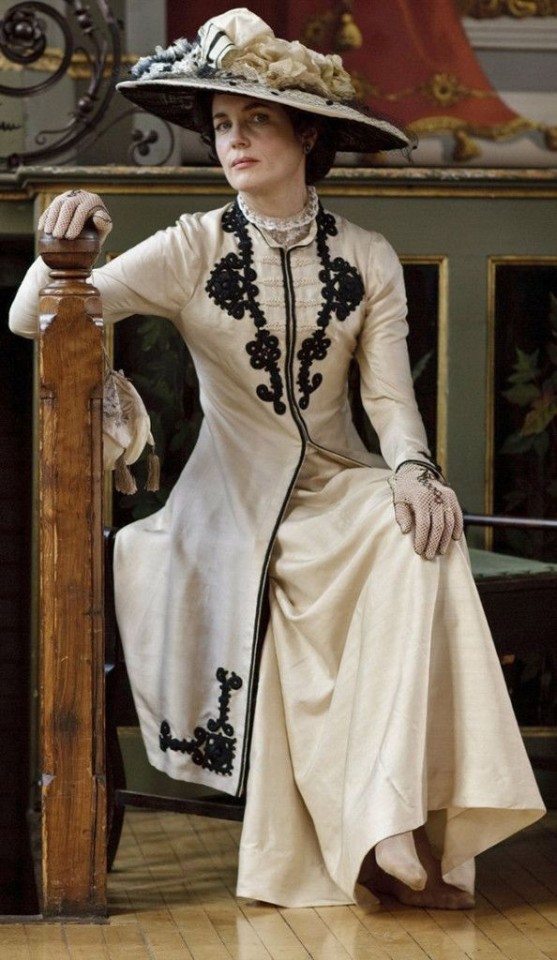
As you may know, the wealthy elite and their servants lived extremely regimented lives and every aspect was governed by careful rules. They would be expected to wear the right outfit at the right time, every minute of the day. Any misstep would be noticed at once and be subject to scruntiny.
In the circles of the elite, one would be expected to change for every occasion. One simply wouldn't wear the same outfit they've been lying around the house in to attend tea at somebody's house. Fashion in this era was dictated by the clock and by the event diary of the wearer.
Ladies

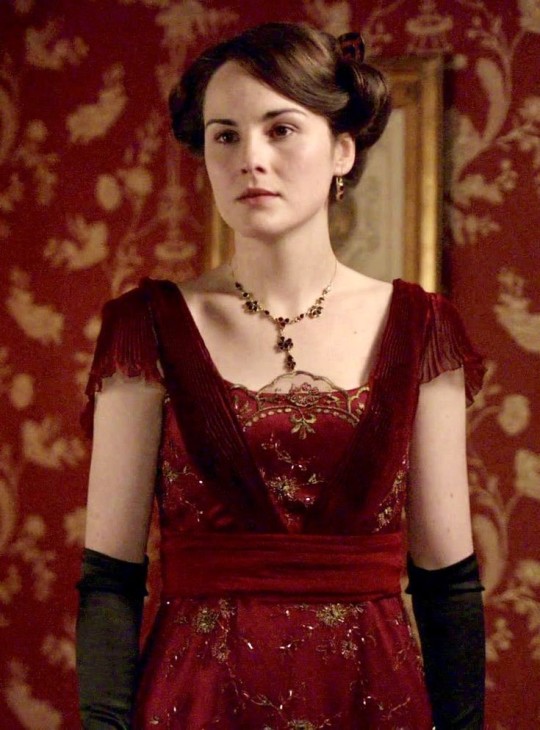
Women of the upperclass would be expected to change at least six times a day. When she would rise for a morning of repose around the house, she would simply wear a house gown or a simple blouse and skirt. If planning a morning stroll, she would change into a walking suit which is a combination of blouse, skirt and jacket along with her hat usually of tweed. If running errands or paying a visit to friends, she would wear another walking suit. If riding, she would wear a riding habit and a hat. If hosting tea or taking tea in her own home, she would change into a tea gown with is a lighter more airier gown more comfortable for chilling in. If attending a garden party, one wears a pastel or white formal day gown accompanied by a straw hat and gloves. For dinner, she would change into an evening gown which would be more elaborate and show off a little more skin than her day wear. After dinner and ready for bed, she would change into her nightgown.
Female servants had an easier time of it. A housekeeper and lady's maid would simply wear a solid black gown for the entire day. A cook and kitchen maids would wear a simple day dress for working with an apron. Housemaids would usually wear a print dress with an apron and cap, changing into the more formal black and white attire you would associate with a maid.
Gentlemen

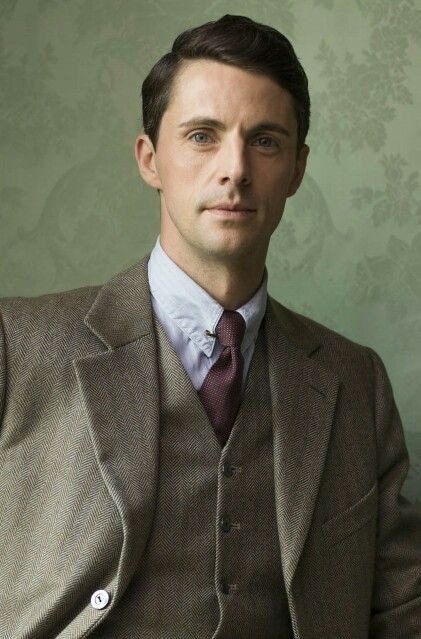
The gentlemen had an easier time but they too were subject to changes throughout the day. Men were expected to wear a suit. The most popular day time suit was a sack suit. These were comprised of plain and loose fitting jackets, worn over a starched shirt with a high collar, waistcoat and straight trousers with ironed creases. These suits were exclusively wool with cheaper ones made of a wool and cotton blend. Grey, green, brown, navy were usual but sine younger men preferred louder colours such as purple which was a trend for a time in the 1910s. These suits were worn about the house or in the city accompanied by a coat. Men would change into tweed if shooting or walking. For garden parties, a gentleman would wear a light coloured suit, usually white and a straw hat. For dinner, a man had two choices: his tails or his dinner jacket. A dinner jacket was for less formal suppers say if dining at home. This was a collection of a jacket, trousers, waistcoat, a bow tie, a detachable wing-collar shirt and black shoes. Lapels of these jackets were edged with silk or satin. Tails were worn at a formal dinner party, at White Tie events. This was made up of a tailcoat, white piqué waistcoat, a starched dress shirt with a pique bib and standing wing collar with a white bow tie. Trousers were lined with trim to hide the seams.
Male servants were soared changing. Footmen would wear their livery around the clock which would resemble white tie to a certain extent or mimic court dress of palace servants. Butler's would wear a variation of a gentleman's evening suit throughout the day. When a male servant is dressed, he usually stays that way. However, a valet or a footman may be taken to pick up during shooting parties where they would wear tweed walking suits.
Jewellery
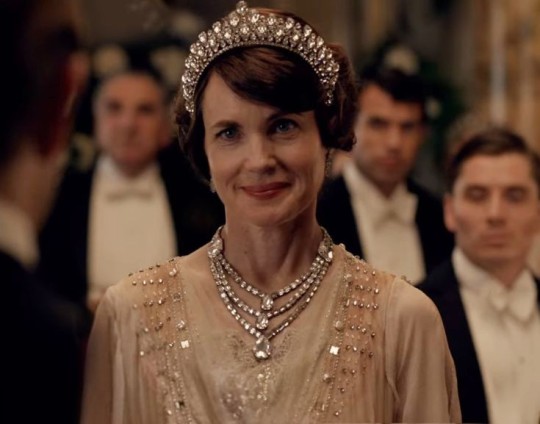
Jewellery was an important sign of status in society. Upperclass women of this time has access to untold caches of sparklers but there were rules concerning their use and meaning. Earrings were usually clip ons as women of high status would not pierce their ears. Simple, understated earrings were worn during the day with more ostentatious sets were worn in the evening time. Broaches were popular at this time, usually worn at the throat of a gown or blouse or walking suit or affixed on hats. Large stoned rings were worn over gloves while slender bands were worn under. Jewellery was intricate and understated amongst old money whole the nouveau riche went for chunkier stones and larger settings. Tiaras were only worn at White Tie events, held after six pm and almost never by unmarried girls. One would not wear a larger tiara than that most senior lady present. Men would wear tie pins, cufflinks and pocket watches to match any occasion be it for a jaunt on the town or at a formal evening party.
Hats
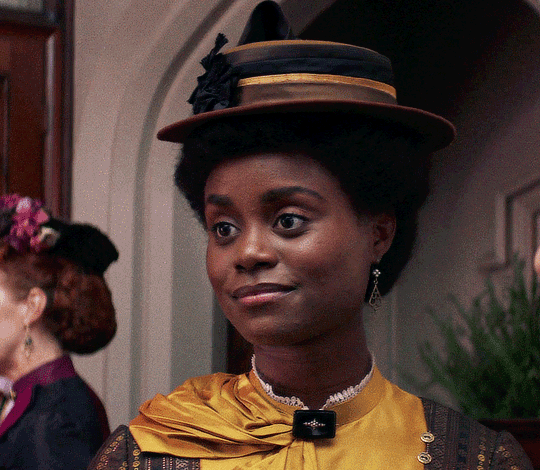
Hats were a staple in this period. Anybody respectable from any class wouldn't venture out of the door without a hat.
Men would wear hats when heading out but always remove them when entering a building, and never wear one without removing it for the presence of a lady. The bowler was seen as more a servant's headwear while a top hat was reserved for gentlemen. Flat caps would be only seen on gentlemen at shooting gatherings or in the country, they were popular among the common class for any informal occasion.
Women had more stricter rules concern hats. Hats for women were more a day accessory worn while out and about. A woman would not wear a hat in her own home even when entertaining and nor would any of the other female occupants if joining the gathering. A woman would not remove her hat when attending a luncheon or tea or any activity. Hats were held in place by a ribbon or sash tied under the chin or by a hat pin, which is essentially a large needle thrust through the hair. This was the period where women's hats became more ornate and rather large, leading to some critisism. Among servants, housekeepers and lady's maids would not wear a hat while indoors and working but a housemaid or cook or kitchen maid would cover their hair with a cap with housemaids changing into a more elaborate one come evening time. Male servants would not wear hats unless travelling or outdoors.
Gloves

Gloves are a staple in this period and worn only at the opportune time. Among servants, only footmen would wear gloves and usually only when serving. Butlers would never wear gloves. Female servants did not wear gloves.
Men did wear gloves, usually woollen or leather while outside or riding gloves when out on horseback.
Women wore gloves whenever outside. Day gloves were usually wrist length, with evening gloves stretching to the elbow. During dinner, evening gloves would be removed at the first course and laid across the lap, replaced at the last course when the ladies leave for tea and coffee after where the gloves are then removed again. Gloves are always worn when dancing and at the theatre or opera. If one is sitting in ones box and sampling some chocolate, one can remove their gloves for that.
Hair and Makeup
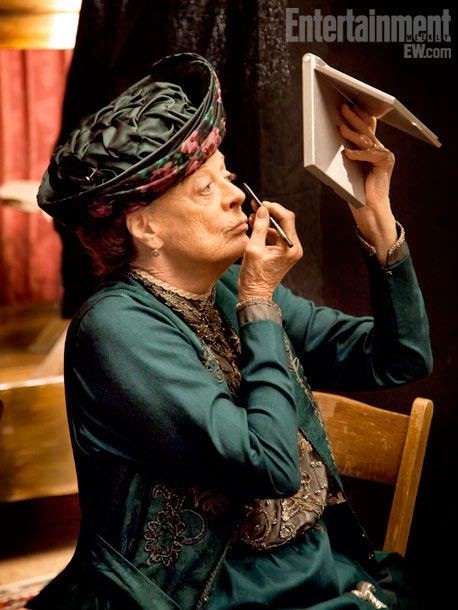
Make up was a no-no amongst the upper crust and for their servants in England and America, as it was seen as licentious but in France, the use of rouge was accepted. Perfume and cologne were acceptable but excessive use was frowned upon.
Hair was dressed by one's lady's maid. Bouffant updos were popular in this time period for married women. During the last years of this period, women began adopting the 'bob' but this was seen as radical and sometimes scandalous. Unmarried girls could wear their hair down, often with accessories like a bow to adorn their tresses. Servants would always tie up their hair and never be seen with it down or uncovered (though this depended on their job).
Men would comb their hair, slicking it back for dinner. Most men were clean shaven but if they wore beards, they were usually well groomed. Hair was kept short for grown men and teenagers but young boys may wear their hair longer whilst in the nursery.
#This bitch loooonnnnggg#Etiquette of the Edwardian Era and La Belle Époque series#Fantasy Guide#Early 20th Century#late 19th century#Great houses#writing#writeblr#writing resources#writing reference#writing advice#ask answered questions#writing advice writing resources#writers#Writing advice writing references#Writing references#Historical fiction#1900s#1890s#Fashion
589 notes
·
View notes
Note
How do I write historical fiction? I have an idea for my story but I'm not sure that my characters feel "historical" if that makes sense?
Writing historical fiction takes some thought. One of the reasons you might not feel that your characters feel "historical," is because you've picked the wrong time period for the type of story you want to tell.
Take a moment to think about your story's themes and core message. What do you want readers to take away from your book? With that in mind, does the period you chose fit that intention? Maybe you need to choose a time in modern history. Maybe you need to go back further. Maybe you need to choose a social and cultural setting that will better highlight what you want to say.
We've got a comprehensive guide to historical fiction available in the Reading Room which might help you get started:
#historical fiction#writing asks#writing blog#writers#creative writing#writing#writing community#writers of tumblr#creative writers#writing inspiration#writeblr#writerblr#writing tips#writblr#writers corner#writers on tumblr#poets and writers#writers life#let's write#resources for writers#helping writers#tips for writers#writing advice#writer#writing resources#writers and poets#fiction#writing stuff#on writing#writer stuff
57 notes
·
View notes
Text
Fantasy Worldbuilding Questions (History)
Historical Worldbuilding Questions:
What are the most important events in this world’s history that impact how it is today (e.g. conflicts, disasters, discoveries, revolutions)?
What subjects would historians in a library dedicated to this world specialize in (what topics are most important to your world’s history)?
Who remembers the most about the past, versus the least, and why?
Who are important figures from this world’s history who would be taught about in schools (will their importance be revised over the story’s course as new information comes to light)?
Where are historical records kept or how are they disseminated (in writing, or more in oral culture and storytelling)?
Where are the most significant landmarks that are remnants of this world’s history?
When do characters find out historical facts about their world previously unknown to them in the story? How does this new knowledge affect them?
When were the key turning points in this world’s history? What prompted change?
Why would someone study this world’s history, what would it teach them?
Why might characters want to find out more about this world’s history? How would this knowledge aid their goals?
❯ ❯ ❯ Read other writing masterposts in this series: Worldbuilding Questions for Deeper Settings
#writeblr#writing#writing advice#novel writing#writing tips#fiction writing#worldbuilding#history#fwq#historical worldbuilding#now novel
86 notes
·
View notes
Text

Cold, Cold, Cold - VIII
1,744 words. Original work, The Jackal of An-Nadr
<< | previous | next | >>
Content Warnings | UNREALITY, fever whump, very vivid hallucinations, nightmares, fear of drowning, hypothermia, anchored to the bottom of a river, used as bait, crying into your captor's arms, gorgeous & incoherent begging
Taglist | @killtheprotagonist @secretwhumplair @ink-and-salt @kixngiggles @brutal-nemesis @thebewilderer @whumpsical @just-a-whumping-racoon-with-wifi @whimperwoods @shydragonrider @pizzasthengym @thecyrulik @ceph-the-writing-spook @mylifeisonthebookshelf @ohwhumpydays @redwingedwhump @whump-queen @scoundrelwithboba
The thready, unraveling world had stopped making any sense to Nadeem so very long ago. He didn't know how long he'd been drifting. Only that night had now come, and the cold had, too.
Silt pressed between his toes as he strained toward shore, just barely brushing the tops of the muckweed with every kick. His hair drifted out in a raising and dipping halo around his shoulders, frost crusting the strands everywhere it touched the water.
He could count on one hand the number of times he had ever gone swimming at night, especially alone. No matter how much he had always trusted the river during the day, it was a game with death to be out here after the sun had set. The rivercats that lazed at the glinting heat of the shore would have returned to the river by now. The ones that couldn't even be bothered to roll an eye in a human's direction during the day would be out hunting for cattle that wandered too close to the blackness of the shore—and they were much more difficult targets than him. And even if the alligators didn't kill him, The Purratu's cold northbound waters were enough to.
The motion of the current had already wicked away any of the heat his body had to offer. Shivering against the steady onslaught of water was useless. He knew with a creeping sense of dread that worsened with every minute; I'm dying.
Still he tread water, trying to keep his chin above the surface. His wrists had been bound behind his back, the anchor tied from them to the depths far too heavy for him to lift. He had spent all of his strength and energy trying to drag it closer to shore, but now his violent shivering was beginning to slow. His body was failing. He didn't know when the stranger was coming back to him, only that he was running out of time.
A sharp, shuddering breath rattled his shoulders, sweat seeping into the pillows as he tried to curl deeper around himself, chasing the warmth that was quickly seeping out through the bottom of the canvas bed. No matter how much he shivered, the draft from below took away all heat faster than he could make it.
Was this his punishment? Were they not coming back?
I can't do this.
He gave a frustrated sob as he tried, one last time, to saw his hands free of the rope. The fibers cut deeper and deeper into his skin, succeeding in doing nothing more than spreading more blood into the water.
He twisted his hands weakly in the leather strips tying them to the head of the bed. His fingertips had long since turned a worrying shade of frigid grey, and it took all his focus to get them to gradually flex to try to keep life in them.
The ladder creaked as one of the creatures came down the steps. He caught the flash of eyes, metallic silver pools of light that glinted in the blackness like those of a hyena. The predator shifted through the small space, the sound of lanterns tinkling against its shoulders. Then a second set of glinting eyes joined it soon after.
"Come back!" he cried in a fog of breath into the empty night. His voice was hoarse from clattering teeth, weak with the only shallow gasps he could still reach from the surface of the water. The lights of windows flickered orange against the dark landscape, glittering like embers in the wind.
He knew this man could outwait him. He could remember nothing of the stranger's face, but a deep well of rot in his chest told him he was facing something worse than freezing to death and drowning. He was bait. Even as the shouts grew closer and he saw the distant silhouettes of his townspeople pass, he bit back his sobs and kept himself silent.
If they come for you, I’ll kill them before you have even a chance to scream.
But now he heard his sister's voices in the distance. He had been a constant for their whole lives. They knew him. They knew him well enough that he knew the river was one of the first places they would look. He could do nothing but cry as he ran out of time.
"Come back and take me," he wept breathlessly, "Pl—please." His leg spasmed with a cramp of pain, and with a gasp of shock his mouth dipped below the surface. It took him a few long, terrifying moments to kick again strongly enough to break the surface. The redoubled cold of the night air washed over his face. He sputtered and coughed from the shock of it, feet sweeping back and forth over and over to try to buy enough air.
He let out a breathless sob as claws brushed slowly, carefully back through his hair. He shuddered, shying away from the touch, and held his breath as he felt it pause. Then a warm hand slid down the curve of his jaw and cradled his face. Please, please. "...please."
Please, warmth. "I'll...do...." anything. I'll do anything. Don't let me spend another night like this.
I'll never make it to the oasis if I don't find warmth.
I have to make it. I don't want to die alone like this.
I don't want to die in this forsaken place.
The hand traced his face, soothing over the sweat-drenched mess of his forehead. His eyes lidded as their warmth slowly seeped into his skin, exhausted sobs slipping through clattering teeth.
"I'll do it," he sobbed into the hum of the locusts.
Please don't let them find me like this. Please, don't let my family be the ones to find me.
Baba, Maaman, his sisters—
"I'll do it!" He yelled, and immediately sank back under the surface. In the moments after he surfaced again he was left coughing so hard he almost couldn't catch his breath.
More lanterns had been lit, glimmering out beyond the high grass like guttering candles. They were still so far away. The wildlife that sang in the banks of the river gave way to the sound of distant cries for a moment before their orchestra breathed over them again.
The creature pulled the blankets away, unwinding him from the tangle of furs. He whined aloud as the cold night air washed over his skin, barely aware of the "Please...no....no," that streamed from his lips.
Talons pulled him out of the blankets, lifting him like he weighed no more than a doll. Then they moved warm over his sweat-drenched clothes, pulled him close against the creature's chest, and continued combing through his hair as arms wrapped around his back. He almost began weeping with relief when warm, bare skin pressed into the numbness of his cheek.
Something writhed beneath his toes in the muck. He jerked his foot away and instinctively kicked at it to keep it at bay, but it wasn’t something he could sustain if he still wanted to breathe. Moments after he was forced to return to his treading, slimy sandpaper scales brushed along the arch of his foot as it persistently returned.
He braced himself for the needle-pain of teeth, drawn to the smell of the wound in his foot. He let out a near-hysterical whine as he felt those mucousy scales twist up between his toes and wrap around his ankle. Then its body once again pressed cold against the bottom of his foot, slicking over the burn, and kept him from dislodging it even as he returned to his desperate treading.
Lengths of bandage turned slowly round and round his foot, gentle hands working around the wound.
His fingers curled against its chest, heat radiating against his cheek as he sunk further into the crook of its arms. The air he breathed was tinged with the incense-burn of smoke, huge hands warming the back of his neck. A wordless murmur echoed by his ear, warm breath ghosting over his skin.
Maybe the creature wouldn't... Maybe...
Wait...
No, he couldn't...it couldn't....
Something rustled in the reeds. Something brushed over his hair.
Which was reality?
"Make it stop," he pleaded breathlessly.
"Nadi!" his sister's voices cried from downriver. "Where are you?"
He coughed on more water, breath blooming in silver clouds around his head. Droplets flicked out around him as he turned his head and desperately searched the dark for any sign of the dark figure from before.
A warm cloth wiped across his forehead, washing over feverish skin. A rumbling voice soothed him as he twisted his face away from the contact.
A man's silhouette shifted, so faintly visible against the reeds that he couldn't even be sure he was there. He kicked desperately to try to raise his head from the water enough to call out, but suddenly found, for the first time, that he couldn't reach the surface.
"Õ̵͜d̸̰̆r̷͈̒ä̸̦i̸̻͋!̷̩̌ ̴̯̌G̷̨̊e̴̙͗t̵͚͂ ̴̼̃m̷̖̆e̶̬͊ ̶̑ͅs̷̠̾ȁ̸̝n̵̪͠d̷̠̽b̷͓̆a̷̳̒g̷̩̽s̸̢̊,̵̤͒ ̶̗̽n̴͓̒o̴̗̚w̴̥̉!”
He cast pleading eyes toward the figure, gasping on a breath that was as much water as air. Please. Please.
That...that was no language he knew. And some resigned sort of dread told him that his mind couldn't have come up with it on his own, not even in the fever of dreams like these.
"Nadi! Where are you?"
He struggled to crack open his eyes, but he could see nothing more than incoherent colors swimming beyond his lashes. They lidded as an ember-warm hand brushed back the small hairs at the edges of his face, relief coursing down his spine with a shudder.
He was either drowning or falling asleep. He could no longer distinguish one from the other any more than he could make sense of either of the realities from dreams.
The man on the shore was going to get what he wanted after all.
The creature at the bottom of the river curled its body slowly up his calf, fins fluttering against his skin. Its body tightened around him. Then it pulled him slowly deeper, and Nadi's vision wavered as the water closed over his head one final time. The muffled roar of the insects went silent. He turned his eyes once again up toward the night sky, empty breath clawing at his lungs.
He had no more strength to fight. His trembling, exhausted muscles finally went lax with one last, burning exhale that blossomed to the surface. Then he was no more.
next | >>
Like this chapter? Please remember it can only be seen by other people if you reblog!
#The Jackal of An-Nadr#(this chapter has an easter egg 👀)#whump#whumpblr#writeblr#whump series#historical whump#historical fiction#fantasy whump#drugged whumpee#defiant whumpee#whump fic#monsterfucker#monsterfucking#sick fic#fever whump#slow-burn monsterfucker series
42 notes
·
View notes
Text
🦄🩸🗡

[WIP - Upon Her Bloody Horn]
A unicorn takes on a human disguise to enact revenge against those who have hunted her kind to extinction, only to find herself caught in the middle of bloody kingdom politics and allured by the one-eyed hunter with whom she's a violent history with.
...
A quick intro for my 80s-inspired Elizabethan dark fantasy WIP with a sort-of-enemies-to-lovers subplot!🤭 Been so obsessed with this WIP yall!!
I comp it as "The Last Unicorn meets Legend (1985) meets Elizabeth: The Golden Age."
#WIP : upon her bloody horn#unicorn#unicorn fantasy#dark fantasy#fantasy book#wip intro#writers of tumblr#writeblr#jojo writes#writers#elizabethan#historical fiction#fantasy romance#romantasy
40 notes
·
View notes
Text
Historical fiction writers of Tumblr: if you could choose one modern thing to send back in time to gift to each of your characters, what would it be?
#I NEED to send No Surprises by Radiohead back to the 1930s so Elliott can hear it. It would rock his little world.#writeblr#writers on tumblr#original character#oc questions#historical fiction
31 notes
·
View notes
Text
Introduction to writeblr
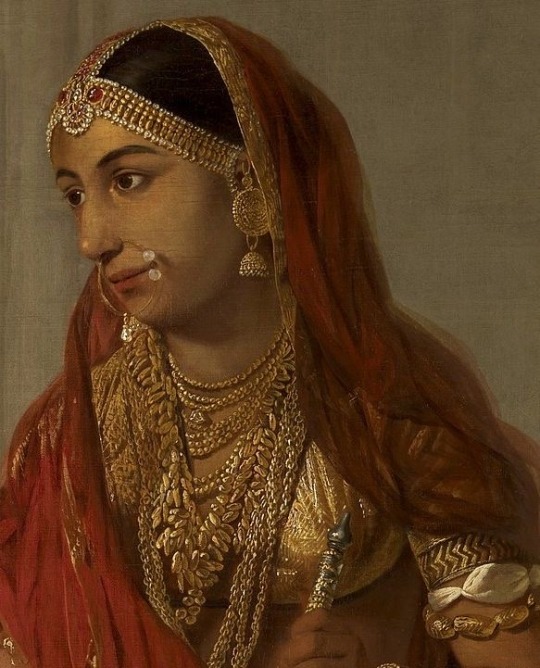

Hello I am Meera S (they/them), I am a speculative fiction writer, writer of historical fiction and more, all of it is queer centric and with person of global majority (colour) angle. Please interact with this post and I shall add you back to the best of my ability!
about my writing
I’ve been writing and fan fictioning since I was 10. I started my first novel a little over a year ago, I am editing it in a month. I gravitate towards the gothic and historical but I am not gonna limit myself to that. I also write short stories, fic and poetry.
1. Vampires, witches, werewolves, ghosts, and more, oh my!: I love me some monsters and allegories that are multilayered, just not zombies.
2. Fantasy and gothic, I write about the human through the inhuman, Anne Rice once said vampire was the most poignant allegory for outcast and other-ness.
3. The historical. You have to know the past to understand the present and future. Ancient History through 1920s and all of South Asian history and mythology.
4. Diversity: I am a queer south asian person but I do earnestly try for informed diverse world views that are nuanced and sympathetic even if not “moral” because vampire, etc.
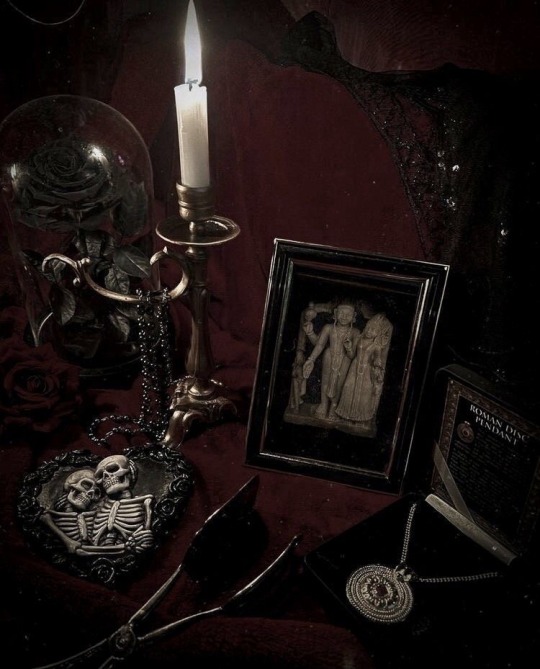
about me
read here.
fandoms: read here. go here for fandom stuff. Here for history. Here for fic. Role-play masterlist.
Influences: Anne Rice, Oscar Wilde, Octavia Butler, Indu Sundaresan, @writingvampires, @elisaintime, Silvia Moreno Garcia and @saintmachina.

what i'm looking for
1. Friends and cool people.
2. eventual beta readers/editors.
3. Other writers.
4. people who know people etc.
genres i read
I gravitate towards the gothic and historical, but anything well written and I think worthwhile.
Just finished: Good Omens, Lasher by Anne Rice, catching up with Dracula daily . also following @re-dracula.
Immediately going to read: Taltos by Anne Rice, The Vampire Lestat by Anne Rice, Common Sense by Thomas Paine, and the memoir of Benjamin Tallmadge (the memoir is only 75 pages long so..)
WIPS
Presently unamed, editing in a month: What if Sibyl Vane was too haunt Dorian Gray? Heavily inspired by Wilde’s poetry, Emilie Autumn, steampunk, the allegory of ghosts as the inescapable past popularized by Charles Dickens in A Christmas Carol. As well as the folklore of banshees, avenging angels & La Llorona. More here. Playlist.

Pending: novella: les liaisons dangereuses x vampires. Playlist.


Pleasure to make your acquaintance!
#meerawrites#writeblr#safe to reblog#writeblr community#writers of tumblr#introducing myself#introduction#introduction post#writeblr intro#bisexual#queer#lgbtq+#historical fiction#writer community#writerblr#writers on tumblr#gothic#gothic horror#desi tumblr#desiblr#desi tag#desi lgbt#desi queer#writing horror#writing historical fiction#my wips#long post#long post tw
98 notes
·
View notes
Text
Writing historical fiction is an endless circle of "I desperately need to know what colors that could be used for painting doors were available for people of this really specific demographic in 1700, and there's no easily accessible data on shit like this because what sane person would want to know this information and I want to cry"
59 notes
·
View notes
Text
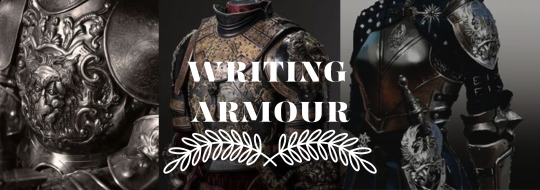
Writing Armour
Types of Armour
All types of clothing provide some protection.
For street fights where you have a couple of teenagers brawling, it would be appropriate to dress them in jeans and a jacket. For more protection, a quilted winter coat or a morotbiker's thick leather jacket, perhaps.
Leather, especially when treated and straightened, offers good protection against arrows, swords, and spears.
The historical armour will include glued-together layers of fabric, thin wooden or bone platelets sewn onto cloth. For wealthier and more advanced societies, metal would be used.
An armour has many parts, and you'll want to describe them with varying levels of detail. However, here are the basics:
A cuirass is a breastplate, protecting the heart and abdomen.
Greaves are shin guards, usually strapped on, protecting the front fo teh lower legs.
Arm guards (bracers)
Helmets
Modern armour will involve a bulletproof vest (which may also be knife-proof). It can be stiff and heavy, and the wearer will sweat under them.
The body armour can lose its effectiveness after a few years.
Disadvantages of Armour
The typical armour (made of steel) is heavy and clunky. In a few hours, your hero is likely to be sweaty, hot and stinky on the inside.
Armour restricts mobility.
Every armour have gaps (the wearer needs to breathe!), and a clever fighter will aim for the chinks.
Shields
Shields are held by the hand rather than worn, so larger shields will be cumbersome and heavey to move, while smaller ones will offer only partial protection.
Shield often consise of wooden frames with leather, hides or metal. They may be painted with heraldic emblems, scary faces, or with magical pentagons.
A shield can also be used as a weapon, like ramming it under the opponent's chin or slamming it down his feet.
The smaller fighter can use a shield well to their advantage, since a shield of the same size will have fuller coverage of their body. However, they will need a strong arm.
Units of githers may use shield formations, such as the tortoise of the Roman legions, the shield wall of the Vikings, and the Greek hoplites shielding not only themselves but the man next to them.
This post is for writers who are trying to bluff their way through a fight scene with minimal knowledge! For full-fledged scenes, I recommend more research.
If you like my blog, buy me a coffee☕ and find me on instagram! 📸
#write#writing#writers and poets#writers on tumblr#helping writers#creative writing#writeblr#creative writers#resources for writers#let's write#writerscommunity#writers#authors of tumblr#poets and writers#armour#weapon#fight scene#character description#fiction#fantasy#action scene#armor#weapons#historical fiction#historical fantasy#writers life#writers block#writers community#writer stuff#writing process
186 notes
·
View notes
Text

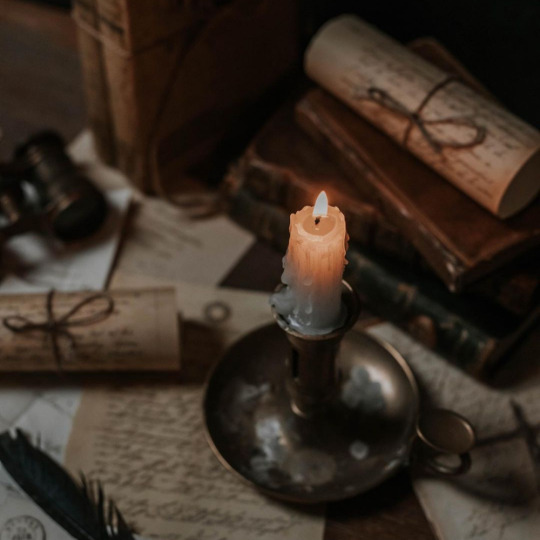


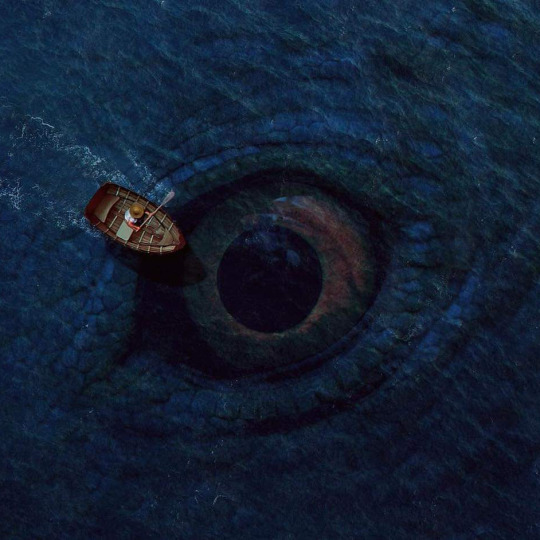
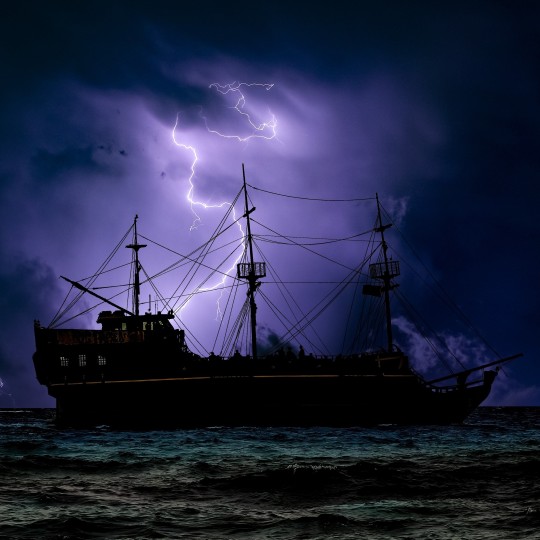



NOW THEY CALL ME THE PLAGUE ⤳ a wip intro
As the fright death sweeps the land, leaving a trail of lifeless sacrifices, a Dream desperately claws their way back to the Dreaming, having spent eternity trapped in the conscious realm.
The infestation’s merciless wake piques Trance’s macabre curiosity, spurred forth by his discovery of a ship that sails across the tumultuous currents of Nightmares and Dreams. They drag Eda, their retired-from-the-seas best friend, along with them as they set sail on the adventures of multiple lifetimes, unwittingly getting themselves irreversibly entwined with fates and forces far beyond their comprehension.
Now They Call me the Plague is gothic historical fiction set against the backdrop of the golden age of piracy. All that remains to be seen is how many more will fall at the altar of an unforgiving death.
STATUS: drafting
GENRE: horror / historical fiction / fantasy / queernormative world
MEDIUM: novel
WARNINGS: substance (ab)use, alcohol, sexual activity (implied), swearing (moderate to heavy), mental health issues, death
(will be modified as necessary)
LINKS: WIP tag (x) | Trance (x) | Eda (x)
CHARACTERS:
Eda Harp (she/her). Refuses to call coffee anything other than “bean juice”. Secretly has a soft spot for just about everything in the world, but is very careful about who she reveals that to.
Tahir Das (he/they). Was given the half-mocking nickname “Trance” by Eda due to his affinity for zoning out at a moment's notice, but they liked it and decided to go by it, much to the former’s annoyance.
Dee (she/they). Theoretically has a last name, but is just as cryptic about that as they are about what goes in their blends of spices and custom rum.
Tyler Mayne (she/her). Owns Smokey’s, the tavern at which Eda works, and, although will never admit to it, has something of a soft spot for her.
Joe Pines (he/him). Tyler’s husband and bartender at their tavern. The closest thing to psychic when it comes to predicting your drink order (it helps that pirates typically want rum).
Maya Lancali (she/her). Short for Shanaya, but use her full name, and whether she’s got a sword in her pants or is just happy to see you will become plenty clear.
general taglist (ask to be added/removed!): @caspersgraveyard @zephsthings @mrunmione @iftitah @cloudofbutterflies @impossible-ozzie-deactivated202 @kissitoff @jacquesfindswritingandadvice // newsletter
picture credits: 1, 2, 3, 4, 5, 6, 7, 8, 9
any boosting would be much appreciated!
#wtwcommunity#writeblr#wip intro#writing community#writers on tumblr#writers of tumblr#dark academia#chaotic aesthetic#historical fiction#fantasy#horror#desiblr#queer writers#writing#wip introduction#writeblr community#bookblr#pirates#piratecore#ntcmp#this is a secondary blog so i can only interact through reblogs!
102 notes
·
View notes
Text
Re: Historical accuracy in fiction
Tl;dr: it is not your job as a fiction author to provide complete historical accuracy. It is your job to evoke a time period and communicate it. Don't get bogged down in research unless you really want to.
First of all, this is my disclaimer: I am talking about the kind of things I like to read and write. I am speaking as a historical fiction fan, author and lover of history. This is my personal taste.
Perfect historical accuracy in fiction is massively overrated. In the past have gotten stuck on writing historical fiction pieces because I felt I needed to research more. This killed my story. The piece of art that could have been amazing sat languishing on a hard drive forever.
I do not think historical fiction needs to be stunningly accurate. In fact, it's easy to see when an author has clearly over-researched their book: it reads like a history text that talks about topics your average person would have never even thought about.
Example:
What an author I read recently thought a 1st century Roman citizen would think about: Ah yes, I remember the British campaign like it was yesterday, even though it was ten years ago, in AD 61. Nero was emperor then....etc.
Me, when I think about something that happened 10 years ago: Shit, that was 10 years ago? Wait, was David Cameron PM then?
(And I know how to read and use Google.)
I'm not saying "don't research the time period you are writing in". I'm saying "research the time period you are writing in as much as you feel like doing, then forget most of it when you get in your character's head, except for what might be meaningful for them".
It is not necessarily the purpose of historical fiction to give readers a detailed and realistic version of the time period. All you really need to give them is the vibes that make them feel as though they're in that time.
I just saw a post that explained how Medieval Europeans had access to spices we might usually associate with Indian cuisine. But is that what people would expect to see in a story set in Medieval Europe? No, and you don't get to put in a little "um, actually" author's note explaining every little detail that feels incongruous but is "technically" accurate. It just feels incongruous.
However, am I going to give my Indian character who lives in London in the 1930s access to curry spices? Yes, because he'd look high and low for them and I bet he'd find a good grocer somewhere in London at that time. I haven't researched how realistic that is, and I don't really care. It will still feel in-touch with the setting, and that's all I care about.
Ever since I gave up on perfect historical accuracy, I have written so many more stories in historical settings, and I love the hell out of them. Would a Louisiana jazz band tour in the UK in 1923? Maybe. But I am definitely putting a Louisiana jazz band in my novel set in the UK in 1923 because people want to see jazz in the jazz-age novel! And so do I!
The key thing is, I've only done the level of research that I'm interested in, enough to get me comfortably embedded in the time.
The fiction author's job is to deliver on the promise of the premise. Don't get caught up accidentally writing non-fiction!
You don't have to "put in your research" to write a historical novel. You get to put in as much research as you want to, and you get to disregard the stuff that doesn't spark joy, because it's your story.
I'd love to talk about this more. Historical fiction fans, what's your taste? Have you ever read anything that felt over-researched, or anything that was under-researched to the point of taking you out of the immersion? Let me know.
38 notes
·
View notes
Note
sorry if you’ve already asked this but what are good things to research/good sources for someone who knows nothing about writing in the 1800s
There are lots of ways you can approach research, so in the Reading Room today, I've put together my top research tips, where and how to find good sources, as well as some reading recommendations!
#writers#creative writing#writing#writing community#writers of tumblr#creative writers#writing inspiration#writeblr#writerblr#writing tips#writing research#writing advice#writing resources#writers corner#historical fiction#writing historical fiction#creative writing tips#research tips#writers and poets#let's write#learn to write#how to research#help for writers#helping writers#writing help#advice for writers
172 notes
·
View notes